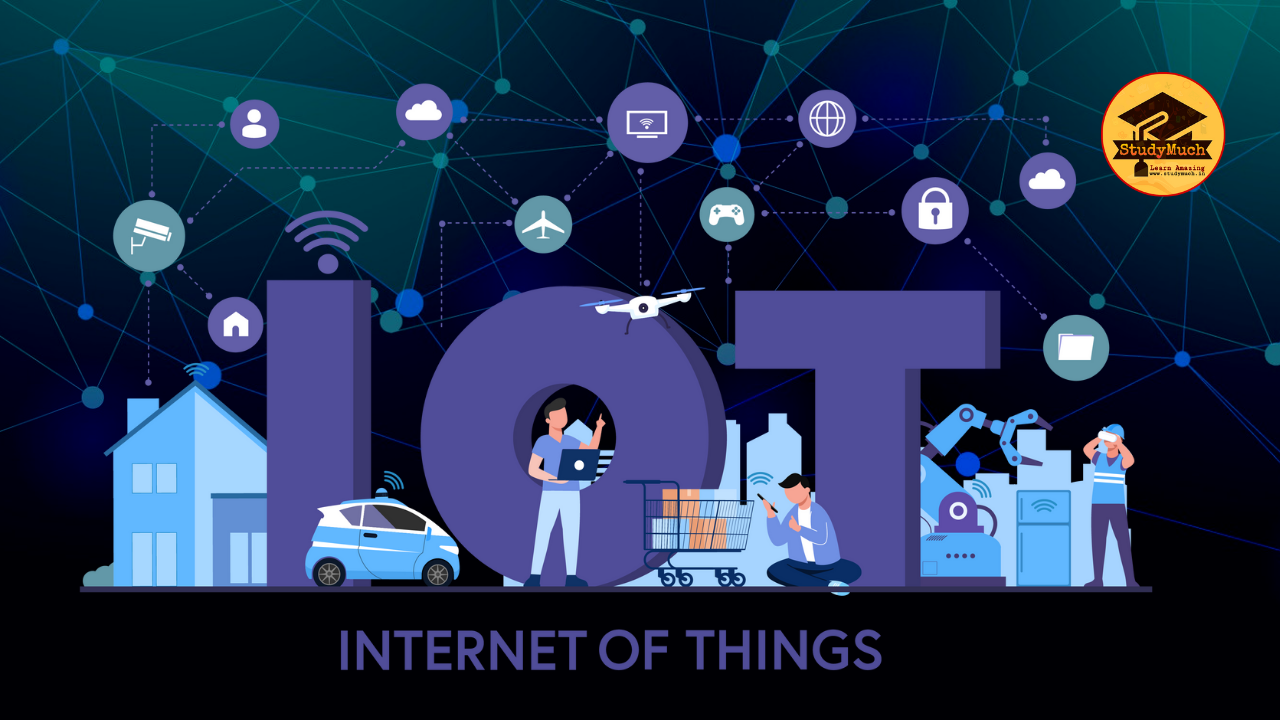Internet of Things (IoT)

Internet of Things (IoT)
In this blog we will discuss the basics of Internet of Things (IoT) and how it works. And explain the benefits of IoT and the challenges that come with this technology.
Introduction of Internet of Things (IoT)
The Internet of Things (IoT) is a network of physical devices, vehicles, and other objects embedded with sensors, software, and other technologies that enable them to connect and exchange data over the Internet.
In other words, IoT allows everyday objects to communicate with each other and with people, providing new levels of convenience and efficiency in our daily lives. In this article, we will discuss the basics of IoT and how it works, as well as the benefits of IoT and the challenges that come with this technology.

What is IoT and how does it work?
IoT is the connection of devices and objects to the Internet, allowing them to share and exchange data with each other and with people. The devices can be anything from smartphones, smart homes, smart cities and even wearables. They are connected via a network, either via Wi-Fi or cellular data, and can exchange data with each other in real time.
IoT networked devices consist of sensors that collect data and send it to a central hub, which then processes and analyzes the data. Analysis of this data can be used to make informed decisions on how to optimize the performance of devices or create new services.
IoT networks are often used in manufacturing, transportation, agriculture, and healthcare. In manufacturing, IoT networks are used to optimize the production process, ensuring that machines are operating at maximum efficiency. In transportation, IoT networks are used to monitor traffic patterns and improve safety on the roads. In agriculture, IoT networks are used to optimize crop yields and reduce waste.
Benefits of Internet of Things (IoT)
IoT has many benefits, including increased efficiency, improved security, and increased convenience. Here are some important benefits of the IoT:
Increased efficiency: IoT networks can help optimize the performance of machines, ensuring they are operating at maximum efficiency. This can lead to cost savings and productivity improvements.
Improved security: IoT networks can be used to monitor and control systems in real time, ensuring they are operating securely. It can improve workplace safety and reduce the risk of accidents.
Enhanced Convenience: IoT networks can be used to automate routine tasks, such as turning off lights when no one is in the room, or adjusting room temperature based on occupancy. It can make our life more convenient and save time.
Better decision making: IoT networks can aggregate data from multiple sources, providing a holistic view of a system. This data can be analyzed to make informed decisions on how to optimize system performance or create new services.

IoT Challenges
While IoT has many benefits, it also presents many challenges that need to be addressed. Here are some of the challenges of IoT:
Security: IoT networks can be vulnerable to cyber attacks, as they often have weak security protocols. This can lead to data breaches and other security threats.
Privacy: IoT networks collect a lot of data, which can be used to track people’s movements and behavior. If the data is not used ethically then it can be a violation of privacy.
Interoperability: IoT networks often use different protocols and standards, making it difficult for devices to communicate with each other. This can cause compatibility problems and reduce efficiency.
Data Management: IoT networks generate a lot of data, which can be difficult to manage and analyze. This can lead to data overload and reduced efficiency.
conclusion
The Internet of Things (IoT) is a network of physical devices, vehicles, and other objects embedded with sensors, software, and other technologies that enable them to connect and exchange data over the Internet. IoT has many benefits, including increased efficiency, improved security, and increased convenience. However, it also presents several challenges that need to be addressed, including security, privacy, interoperability, and data management.
Overall, IoT is a rapidly evolving technology that has the potential to transform many industries, but using it ethically and securely requires careful planning and implementation.
So, in this blog you have learned about the Internet of Things (IoT), what is IoT it benefits, how it works and challenges of the Internet of Things. I hope you learned this blog well, and if you have any questions and queries then ask in the comments section.
Read Also –



1 Comment
binance signup · September 11, 2024 at 11:14 am
Your article helped me a lot, is there any more related content? Thanks!